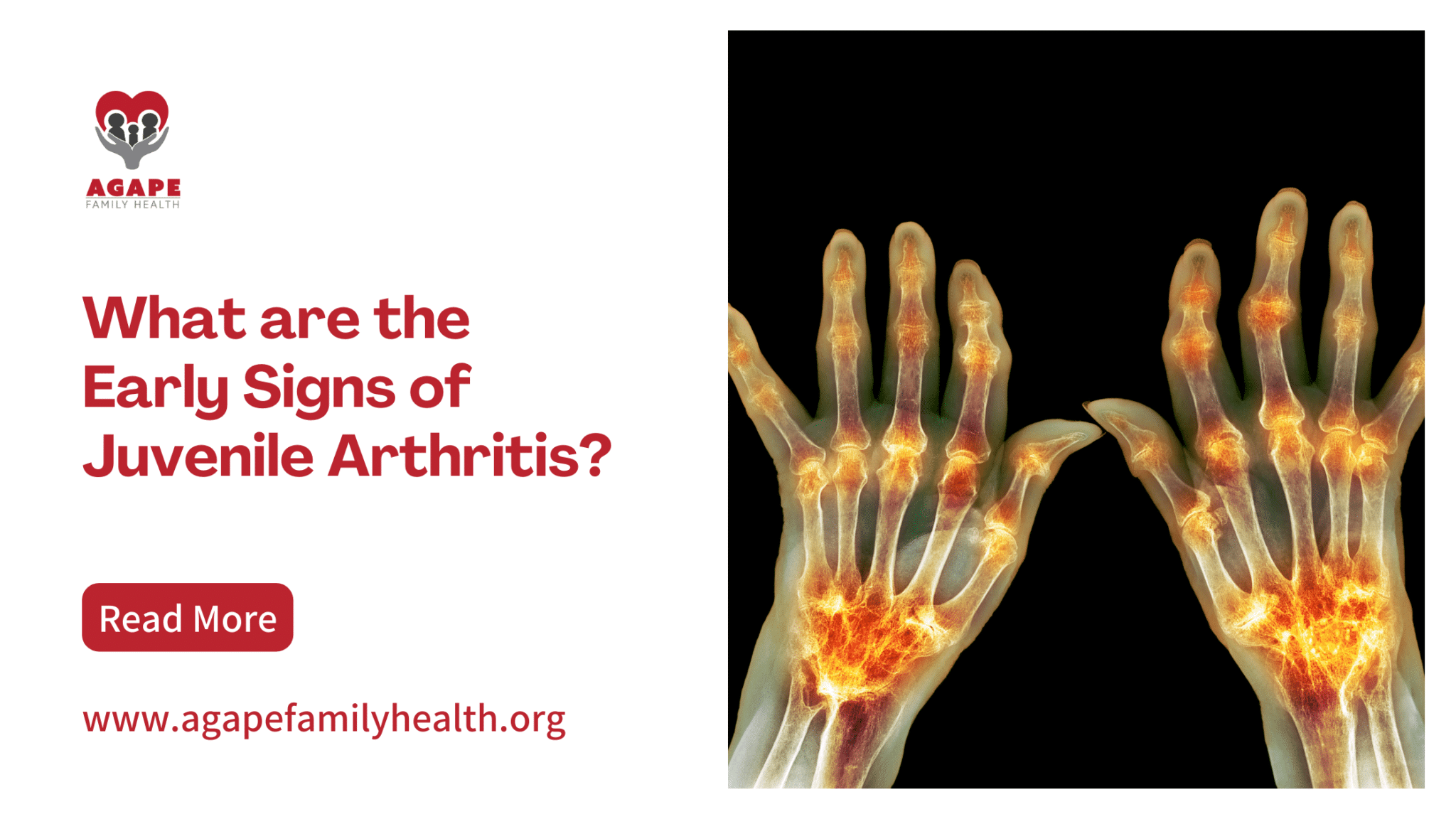Juvenile arthritis, also known as pediatric rheumatic disease, affects nearly 300,000 children in the United States alone. This chronic condition can cause significant discomfort and disability if not diagnosed and treated promptly. Recognizing the early signs of juvenile arthritis is crucial for early intervention and effective management.
Juvenile arthritis is not a single disease but a term that encompasses several different chronic inflammatory diseases in children. It can lead to various symptoms such as persistent joint pain, swelling, and stiffness, which significantly impact a child’s ability to perform daily activities and enjoy a normal, active childhood. Without timely intervention, juvenile arthritis can cause lasting damage to the joints, potentially leading to severe physical limitations and impacting overall quality of life.
Understanding Juvenile Arthritis
Juvenile arthritis is an umbrella term for various autoimmune and inflammatory conditions that can develop in children under 16. The most common type is juvenile idiopathic arthritis (JIA), which encompasses several subtypes, each with distinct symptoms and patterns of onset. According to the CDC, early diagnosis and treatment are essential in preventing serious complications.
Early Signs of Juvenile Arthritis
- Persistent Joint Pain
- One of the hallmark symptoms is ongoing joint pain. Children may complain of aching joints, particularly in the knees, wrists, and fingers. Unlike typical growing pains, this pain persists for weeks or months.
- Swelling and Stiffness
- Swelling in the joints, often accompanied by warmth and redness, is a common sign. Stiffness, especially in the morning or after periods of inactivity, can also indicate juvenile arthritis. This stiffness may cause the child to limp or struggle with daily activities.
- Fever and Fatigue
- Children with juvenile arthritis may experience unexplained fevers that come and go. These fevers are usually low-grade and can be accompanied by general fatigue, affecting the child’s energy levels and overall well-being.
- Reduced Range of Motion
- The inflammation in the joints can lead to a reduced range of motion. Children might find it difficult to fully extend or flex affected joints, impacting their ability to participate in physical activities.
- Rashes and Eye Problems
- Some types of juvenile arthritis are associated with rashes, particularly a salmon-pink rash that appears with fever spikes. Additionally, eye inflammation, known as uveitis, can occur, leading to redness, pain, and vision problems if left untreated.
Solutions and Management
Recognizing the early signs of juvenile arthritis is the first step in addressing this chronic condition. Early detection and intervention can help manage symptoms, prevent joint damage, and improve the overall quality of life for affected children. Here are some key strategies for managing juvenile arthritis:
- Medical Evaluation and Diagnosis
- If your child exhibits any of the early signs of juvenile arthritis, it is essential to consult a pediatric rheumatologist. A thorough medical evaluation, including a physical examination and laboratory tests, can help diagnose the specific type of juvenile arthritis and develop an appropriate treatment plan.
- Medication
- Various medications can help control inflammation, relieve pain, and prevent joint damage. Nonsteroidal anti-inflammatory drugs (NSAIDs), disease-modifying antirheumatic drugs (DMARDs), and biologic agents are commonly used in treatment. According to the NIH, these medications, when used under medical supervision, can significantly improve symptoms and long-term outcomes.
- Physical Therapy
- Physical therapy plays a crucial role in maintaining joint flexibility, strength, and overall physical function. A tailored exercise program can help children stay active and minimize the impact of arthritis on their daily lives.
- Healthy Lifestyle
- Encouraging a healthy lifestyle, including a balanced diet and regular physical activity, can support overall well-being and help manage symptoms. Maintaining a healthy weight reduces stress on the joints and improves mobility.
- Support and Education
- Providing emotional support and education to both the child and their family is essential. Understanding the condition, treatment options, and coping strategies can empower families to manage juvenile arthritis effectively. Support groups and counseling services can also provide valuable resources and a sense of community.
Diagnosing Juvenile Arthritis
Diagnosing JIA is complex because there’s no single test. Doctors use a mix of medical history, physical checks, and tests to find the cause of joint pain and swelling in children.
Physical Examination
The doctor will look closely at the child’s joints for swelling, tenderness, warmth, or limited movement. They’ll also check for fever, rash, or swollen lymph nodes. These signs can hint at the type of juvenile arthritis present.
Blood Tests and Imaging
Doctors might order blood tests to check for inflammation and autoantibodies. These include tests for ESR, CRP, ANA, RF, and CCP antibodies. These tests help pinpoint the JIA subtype and guide treatment.
Imaging like X-rays, ultrasounds, or MRI can show joint damage and inflammation. They also help rule out other conditions causing symptoms.
By using physical checks, medical history, blood tests, and imaging, doctors can accurately diagnose and identify the child’s JIA type. This helps create a proper treatment plan.
| Type of Juvenile Arthritis | Characteristics |
|---|---|
| Polyarticular Juvenile Idiopathic Arthritis (JIA) | Affects five or more joints, more common in girls |
| Pauciarticular Juvenile Idiopathic Arthritis (JIA) | Affects four or fewer joints, most commonly the knee and wrist |
| Systemic Juvenile Idiopathic Arthritis (JIA) | Affects the whole body, causing severe symptoms and joint involvement |
If you see these signs in your child, get medical help right away. Early diagnosis and treatment are vital for managing juvenile arthritis and avoiding long-term problems. With the right care and support, kids with juvenile arthritis can live healthy, active lives.
Importance of Early Detection
Early detection of juvenile arthritis is critical in managing the disease effectively. According to the NIH, timely medical intervention can help control symptoms, prevent joint damage, and improve the child’s quality of life. If your child exhibits any of these early signs, it is essential to consult a pediatric rheumatologist for a comprehensive evaluation.
Statistical Insights
- Prevalence: Juvenile arthritis affects approximately 1 in 1,000 children.
- Diagnosis Age: Most cases are diagnosed between the ages of 2 and 16.
- Treatment Outcomes: With early and aggressive treatment, many children can achieve remission, leading to minimal long-term joint damage and improved life quality.
Conclusion
Recognizing the early signs of juvenile arthritis can make a significant difference in a child’s life. Persistent joint pain, swelling, stiffness, unexplained fevers, and reduced range of motion are all indicators that warrant medical attention. By consulting healthcare professionals and accessing resources from reputable organizations like the CDC and NIH, parents can ensure their children receive the care they need to lead active, healthy lives despite this chronic condition



